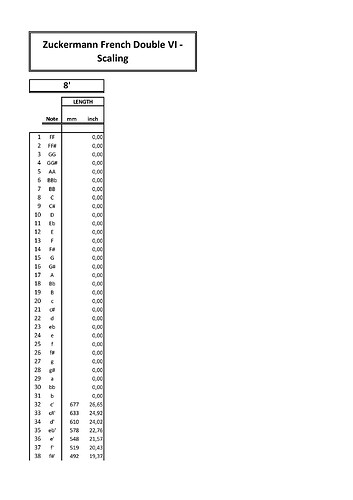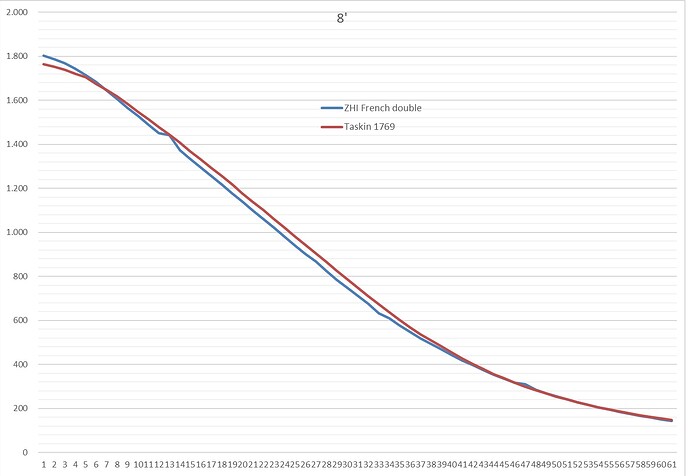So I am building a Zuckermann / The Paris Workshop French Double VI kit. I purchased it shortly before or shortly after their splitting (1997 maybe?), then left it alone for many years.
The design is ZHI’s, while the actual production was made in France by Marc Ducornet / TPW.
The “kit” is a bit less than a kit, now, because I re-did or I am re-doing:
- the soundboard. I discarded the kit soundboard and re-did from scratch using my valued Abete rosso della Val di Fiemme spruce (or is it fir?) I purchased from Rivolta in 1996.
- The 8’ bridge, as it was completely warped (not a fault of the factory, the bridge was a victim of a small flood in my house due to a major fail of my hydraulic system).
- The jacks and the tongues. I didn’t buy the wooden ones as I planned to make them. Of course I don’t want to use the plastic jacks.
- I’ll quill it in bird’s (swan) feathers.
As you may know, this kit is derived from the Edinburgh 1769 Taskin. I have a drawing of the Taskin and there aren’t macroscopic differences excepted the zhi-tpw has 63 notes instead of 61, reaching g’‘’.
Everything else is as “historical” as can be: everything is solid good quality wood, no plastic, no plywood, and everything has the shape it should have. Well, registers and lower guides have regular rectangular mortises of the correct size, but they are routed and not sawn/chiselled. I can live with that so I’ll let them alone, if I don’t change my mind before stringing.
As I made - ehm, I’m making - a new 8’ bridge, I have checked the scaling, just to be sure.
I found it more or less “historical”, the length of c’’ is 354 mm (13.94 in) (long string, of course).
However I’ve found some deviations from the ideal that make me worry.
I am not suprised, as on page 10 of the manual DJ Way writes:
======
Space for an extra row of jacks on this instrument would seriously distort the treble scaling-which is already distorted a bit to allow the instrument to extend to g"‘. French double harpsìchords ought not to have a higher note than f"’, and some day I will take my courage in both hands and eliminate the top two notes of this instrument - but this is a subtlety that affects only a few notes in the top treble, and is not to be worried about.
======
The scaling is indeed lenghtened a bit, though the stringing list doesn’t change from iron to high-tensile steel, so probably deviations are not dangerous (however, the stringing list is disputable, I’ll not follow it. More on this in the upcoming weeks or months). Moreover, the scaling seems to be a tiny bit too rapidly foreshortened starting from c’’ and lower. The harpsichord is 237.5 cm (93.5 in) and the curve of the bentside seems a very usual and traditional French curve.
Nonetheless, I am worried and I wonder if any participant would mind reading and commenting the scaling. Remember, it’s not the actual scaling in my harpsichord, measurement are from the drawing.
What do I do? close my eyes and strictly follow the drawing or calculate a more “right” scaling and glue the bridge(s) accordingly? (or, if I find a table with the complete Taskin scaling I could just copy that - it’s difficult to get it from the drawing: anybody has such a table? maybe Claudio who has written an essay on Taskin’s scaling and stringing?) Or maybe I could eliminate the top two notes and relocate the bridges accordingly? and modify the keyboards, not an easy task, and fill the space in the case… uhm, I hope you will not advise so, too much work. I wouldn’t eliminate the strings leaving the keys “muted”.



